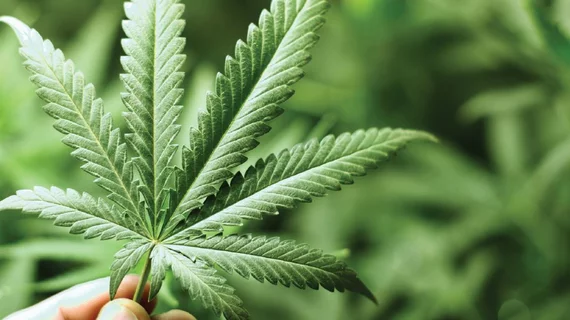Recent marijuana use increases risk of serious stroke complication
Recent marijuana users are more than twice as likely to develop a dangerous bleeding complication after an aneurysmal subarachnoid hemorrhage (aSAH), according to new data published in Stroke.
The goal of the study was to analyze the impact of tetrahydrocannabinol (THC) on complications after an aSAH. These potentially fatal strokes are already associated with neurological disability in nearly 66% of patients and death in nearly 40%.
The study’s authors tracked more than 1,000 patients with aSAH who were treated at a single U.S. facility between Jan. 1, 2007 and July 31, 2019.
Researchers examined the incidence of delayed cerebral ischemia in 46 patients who tested positive for THC, meaning they had used marijuana within the last three to 30 days. Forty-one percent of the patients were women, and the median patient age was 47 years old.
In addition, they tested 968 people who tested negative for THC. Seventy-one percent of those patients were women, and the average median patient age was 56 years old.
In the analysis, recent marijuana users did not present with larger aneurysms or more severe stroke symptoms upon hospital admission. In addition, they were not more inclined to have high blood pressure or other cardiovascular risk factors compared with patients who tested negative for THC.
Nevertheless, recent users of marijuana tended to test positive for other substances such as cocaine, methamphetamines and tobacco compared with patients who were negative for THC.
In the study, among all participants, 36% had delayed cerebral ischemia, 50% were diagnosed with moderate to severe disability and 13.5% died.
The author found that on follow-up, patients who had used other illicit substances and tested positive for THC were more likely to develop delayed cerebral ischemia or long-term moderate to severe physical disability. They were also more likely to die.
“When people come in with ruptured aneurysms, and they have a history of cannabis use or are positive on a toxicology screen, it should raise a red flag to the treating team that they are at higher risk of vasospasm and ischemic complication,” Michael T. Lawton, MD, senior author of the study and president and CEO of Barrow Neurological Institute in Phoenix, said in a prepared statement.
He added: “Of all the substances detected in the toxicology screen, only cannabis raised the risk of delayed cerebral ischemia. Cocaine and meth are hypertensive drugs, so they are likely related to the actual rupture but not expected to have an impact on vasospasm.”
Lawton noted that assessing the risks and benefits of marijuana use is vital as it becomes more popular and more states make recreational use legal.
In the same statement, Robert L. Page II, PharmD, chair of the writing group for the American Heart Association’s 2020 cannabis statement said: “The current study is not at the level of science of a randomized controlled trial, but it is a rigorous statistical analysis involving more than 1,000 patients, so the results are important and add to what we already know about possible adverse effects of marijuana use.”
Read the research letter here:
